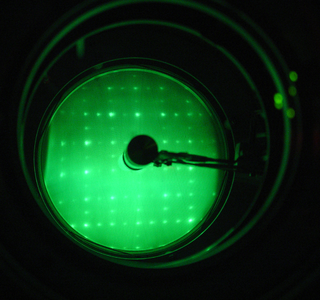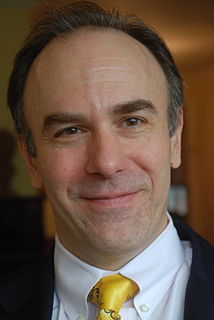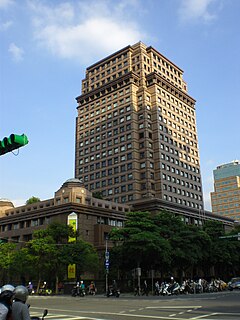
Green building refers to both a structure and the application of processes that are environmentally responsible and resource-efficient throughout a building's life-cycle: from planning to design, construction, operation, maintenance, renovation, and demolition. This requires close cooperation of the contractor, the architects, the engineers, and the client at all project stages. The Green Building practice expands and complements the classical building design concerns of economy, utility, durability, and comfort. In doing so, the three dimensions of sustainability, i.e., planet, people and profit across the entire supply chain need to be considered.

Leadership in Energy and Environmental Design (LEED) is a green building certification program used worldwide. Developed by the non-profit U.S. Green Building Council (USGBC), it includes a set of rating systems for the design, construction, operation, and maintenance of green buildings, homes, and neighborhoods, which aims to help building owners and operators be environmentally responsible and use resources efficiently. By 2015, there were over 80,000 LEED-certified buildings and over 100,000 LEED-accredited professionals. Most LEED-certified buildings are located in major U.S. metropolises. LEED Canada has developed a separate rating system for the regulations and climate of that country.

RBC Centre, also known as the RBC Dexia Building, is an office tower in Toronto, Ontario, Canada. Unlike the corporate offices of other Canadian financial institutions, the RBC Centre is outside of Toronto's Financial District. It has been owned and managed by Cadillac Fairview Corporation jointly with the Ontario Pension Board since 2012. The building is connected to the PATH.

The U.S. Green Building Council (USGBC), co-founded by Mike Italiano, David Gottfried and Rick Fedrizzi in 1993, is a private 501(c)3, membership-based non-profit organization that promotes sustainability in building design, construction, and operation. USGBC is best known for its development of the Leadership in Energy and Environmental Design (LEED) green building rating systems and its annual Greenbuild International Conference and Expo, the world’s largest conference and expo dedicated to green building. USGBC was one of eight national councils that helped found the World Green Building Council (WorldGBC). The current president and CEO is Mahesh Ramanujam who acquired this role in January 2017 after co-founder Rick Fedrizzi.

Low-energy electron diffraction (LEED) is a technique for the determination of the surface structure of single-crystalline materials by bombardment with a collimated beam of low-energy electrons (30–200 eV) and observation of diffracted electrons as spots on a fluorescent screen.

The Canada Green Building Council (CaGBC) was created in 2003 to further the expansion of green building in Canada. Prior to the formation of the Council, Canada had participated in the United States Green Building Council (USGBC) through British Columbia's membership in the USGBC's Cascadia Chapter.

Energy engineering or Energy Systems Engineering is a broad field of engineering dealing with energy efficiency, energy services, facility management, plant engineering, environmental compliance, sustainable energy and renewable energy technologies. Energy engineering is one of the more recent engineering disciplines to emerge. Energy engineering combines knowledge from the fields of physics, math, and chemistry with economic and environmental engineering practices. Energy engineers apply their skills to increase efficiency and further develop renewable sources of energy. The main job of energy engineers is to find the most efficient and sustainable ways to operate buildings and manufacturing processes. Energy engineers audit the use of energy in those processes and suggest ways to improve the systems. This means suggesting advanced lighting, better insulation, more efficient heating and cooling properties of buildings. Although an energy engineer is concerned about obtaining and using energy in the most environmentally friendly ways, their field is not limited to strictly renewable energy like hydro, solar, biomass, or geothermal. Energy engineers are also employed by the fields of oil and natural gas extraction.

Robert "Rob" Watson, is a market transformation expert, international leader in the green building movement and CEO and Chief Scientist of The ECON Group. He founded the LEED Green Building Rating System of the United States Green Building Council (USGBC) in 1993 and was its Founding Chairman until 2006.

Efficient energy use, sometimes simply called energy efficiency, is the goal to reduce the amount of energy required to provide products and services and can also reduce effects of air pollution. For example, insulating a building allows it to use less heating and cooling energy to achieve and maintain a thermal comfort. Installing light-emitting diode bulbs, fluorescent lighting, or natural skylight windows reduces the amount of energy required to attain the same level of illumination compared to using traditional incandescent light bulbs. Improvements in energy efficiency are generally achieved by adopting a more efficient technology or production process or by application of commonly accepted methods to reduce energy losses.
Perkins&Will is a global design practice founded in 1935. Since 1986, the group has been a subsidiary of Lebanon-based Dar Al-Handasah. Phil Harrison has been the firm's CEO since 2006.

Green Business Certification Inc. (GBCI) is an American organization that provides third-party credentialing and verification for several rating systems relating to the built environment. It was established as the Green Building Certification Institute in January 2008 with the support of the U.S. Green Building Council to provide independent oversight of the Leadership in Energy and Environmental Design (LEED) project certification and professional credentialing processes. The organization's current name was adopted on 16 April 2015 after the organization starts to provide third-party certification for the International WELL Building Institute's evidence-based building standard WELL Building Standard on 4 April 2014, the Perfect Power Institute's PEER standard, and the Global Real Estate Sustainability Benchmark.
This article provides examples of green building programs in the United States. These programs span the public, private, and non-profit sectors, and all have the goal of increasing energy efficiency and the sustainability of the built environment.

SM Aura Premier is a large upscale shopping mall located along McKinley Parkway corner 26th Street, Bonifacio Global City, Taguig Metro Manila, Philippines, owned by SM Prime Holdings, the country's largest mall developer. It is the 13th SM Supermall in Metro Manila and 47th SM Prime mall in the Philippines. It is the 2nd SM Supermall to be called "Premier" after SM Lanang Premier. The shopping center is situated near its rival mall Market! Market!, owned by Ayala Malls, a real estate subsidiary of Ayala Land, and affiliate of Ayala Corporation. It is designed by EDGE Interior Designers and Arquitectonica.
Green building on college campuses is the purposeful construction of buildings on college campuses that decreases resource usage in both the building process and also the future use of the building. The goal is to reduce CO2 emissions, energy use, and water use, while creating an atmosphere where students can be healthy and learn. Universities across the country are building to green standards set forth by the USGBC, United States Green Building Council. The USGBC is a non-profit organization that promotes sustainability in how buildings are designed and built. This organization created the Leadership in Energy and Environmental Design (LEED) rating system, which is a certification process that provides verification that a building is environmentally sustainable. In the United States, commercial and residential buildings account for 70 percent of the electricity use and over 38 percent of CO2 emissions. Because of these huge statistics regarding resource usage and emissions, the room for more efficient building practices is dramatic. Since college campuses are where the world's future leaders are being taught, colleges are choosing to construct new buildings to green standards in order to promote environmental stewardship to their students. Colleges across the United States have taken leading roles in the construction of green building in order to reduce resource consumption, save money in the long run, and instill the importance on environmental sustainability on their students. It is a better way to motivate new generation to live a sustainable life.
The LEED Professional Exams are administered by the Green Business Certification Inc. (GBCI) for professionals seeking to earn credentials and certificates. The exams test knowledge based on the U.S. Green Building Council's Leadership in Energy and Environmental Design (LEED) Rating Systems.

The Shaw Centre is a convention centre located in the downtown core of Ottawa, Ontario, Canada. It opened in April 2011. The Centre replaces the Ottawa Congress Centre, which opened in 1983 and is built on the site of the Ottawa Congress Centre building which was demolished in 2008-2009.
LEED for Neighborhood Development (LEED-ND), where "LEED" stands for Leadership in Energy and Environmental Design, is a United States-based rating system that integrates the principles of smart growth, urbanism, and green building into a national system for neighborhood design. LEED certification provides independent, third-party verification that a development's location and design meet accepted high levels of environmentally responsible, sustainable development.
Energy system may refer to:
Illinois Solar Decathlon (ISD) is an interdisciplinary organization based in the Champaign-Urbana, IL and is the official Solar Decathlon team for the University of Illinois at Urbana-Champaign. It is also closely affiliated with the Illinois School of Architecture.

The Cathay Financial Center is a 26-story, 105 metres (344 ft) skyscraper office building designed by Japanese architect Tokutoshi Torii and completed in 2002 in Xinyi District, Taipei, Taiwan. The building houses the corporate headquarters of Cathay Financial Holding.












